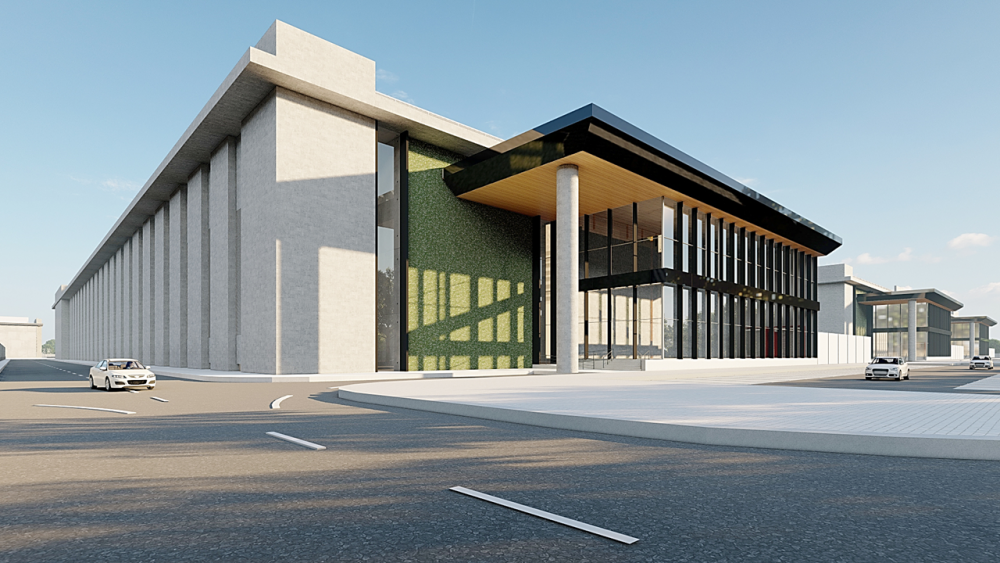- The reliability and speed of internet services, which have become essential in our work and personal lives, depend on the efficiency and location of data centers.
- Far from being replaced by the cloud, harming the environment, or detracting from neighborhoods, modern data centers are evolving to be more efficient, sustainable, and community friendly.
- Dispelling negative perceptions of data hubs is important since they are crucial to the infrastructure needed to support the future of work.
This article was written by Ci Design’s Dutch Wickes and Thomas Hofmann for Work Design Magazine.
Whether you’re googling to find the nearest coffee shop, friending someone from your past, adding to your online shopping cart, or emailing your boss, chances are your information is being sent to and from a data center.
Although nearly everyone in the world depends on data centers, very few people know what they are, how they operate, where they are and why we need them to stay online.
Dispelling negative perceptions of these data hubs is important since they are crucial to the infrastructure needed to support the future of work.
Here are five myths that are pervasive about data centers and the reality of what’s actually happening now.
Myth: Data Centers Can Be Built Anywhere
Reality: Choosing a Data Center Site Depends on a Variety of Factors
Unlike server rooms that are buzzing away in the basement of an office building, data centers are typically larger conglomerates of connected servers protected within a facility that looks similar to an industrial building or warehouse. Data center developers must consider important factors like connectivity, infrastructure and weather when choosing a site. It is recommended to avoid sites with limited power or prone to natural disasters as variables such as these may lead to potential disruptions in service.
Myth: Data Centers Are Being Replaced by the Cloud
Reality: The Cloud Relies on Data Centers
One of the most persistent myths is that the rise of cloud computing is rendering traditional data centers obsolete. In truth, the cloud is not a replacement for data centers but an evolution that heavily relies on them. Cloud services are essentially data stored and processed in remote data centers. Companies like Amazon Web Services (AWS), Microsoft Azure, and Google Cloud operate vast networks of data centers around the world. The increased demand for cloud services is driving the growth and construction of more data centers, not less. Our architecture firm is seeing an uptick in projects aimed at building and retrofitting data centers to support cloud infrastructure.
Myth: Data Centers Are Killing the Environment
Reality: Sustainable Design and Renewable Energy Are Transforming Data Centers
It’s true that data centers consume significant amounts of energy. However, the narrative that they are unmitigated environmental disasters is outdated. Advances in sustainable architecture and technology are dramatically reducing the environmental impact of data centers. Many new data centers are designed with energy efficiency in mind, utilizing green building materials, advanced cooling systems, and renewable energy sources. For example, most facilities are powered by utility companies that rely on solar or wind energy to provide a substantial amount of their power. Innovative cooling solutions, such as using natural airflows or water from nearby lakes, drastically reduce energy consumption.
Advances in sustainable architecture and technology are dramatically reducing the environmental impact of data centers.

Myth: Data Centers Are Ugly, Loud Buildings that Take Away from Neighborhoods’ Appeal
Reality: Modern Data Centers Can Be Community Assets
The image of data centers as industrial, unattractive eyesores is a relic of the past. Today’s data centers are often designed with aesthetics and community integration in mind. Many facilities incorporate green spaces, modern architectural designs, and public amenities. These centers are often quiet neighbors, generating little noise and minimal traffic compared to other industrial facilities. Data centers can also contribute positively to the community through tax benefits, creation of jobs in construction and after opening, and increased connectivity.
Myth: Data Centers Have Nothing to Do with Me
Reality: Data Centers Are Integral to Everyday Life
Many people don’t realize how integral data centers are to their daily lives. Every time you stream a movie, use a smartphone app, conduct a video call, or even use a credit card, you’re relying on data centers. They are the backbone of the digital economy, enabling everything from social media to financial transactions to healthcare services. The reliability and speed of internet services, which have become essential in our work and personal lives, depend on the efficiency and location of data centers. Thus, even if you’ve never seen a data center, its presence and operation directly impact your quality of life and access to modern conveniences.
The reliability and speed of internet services, which have become essential in our work and personal lives, depend on the efficiency and location of data centers.
Conclusion
Data centers are critical to the modern world’s infrastructure, supporting everything from cloud services to daily internet usage. Far from being replaced by the cloud, harming the environment, or detracting from neighborhoods, modern data centers are evolving to be more efficient, sustainable, and community friendly. As architects, our role is to continue pushing the boundaries of design to create data centers that meet the needs of today while planning for the future. By sharing the reality behind these myths, we hope to foster a better understanding of the importance and benefits of modern data centers.


 Dr. Gleb Tsipursky – The Office Whisperer
Dr. Gleb Tsipursky – The Office Whisperer Nirit Cohen – WorkFutures
Nirit Cohen – WorkFutures Angela Howard – Culture Expert
Angela Howard – Culture Expert Drew Jones – Design & Innovation
Drew Jones – Design & Innovation Jonathan Price – CRE & Flex Expert
Jonathan Price – CRE & Flex Expert












